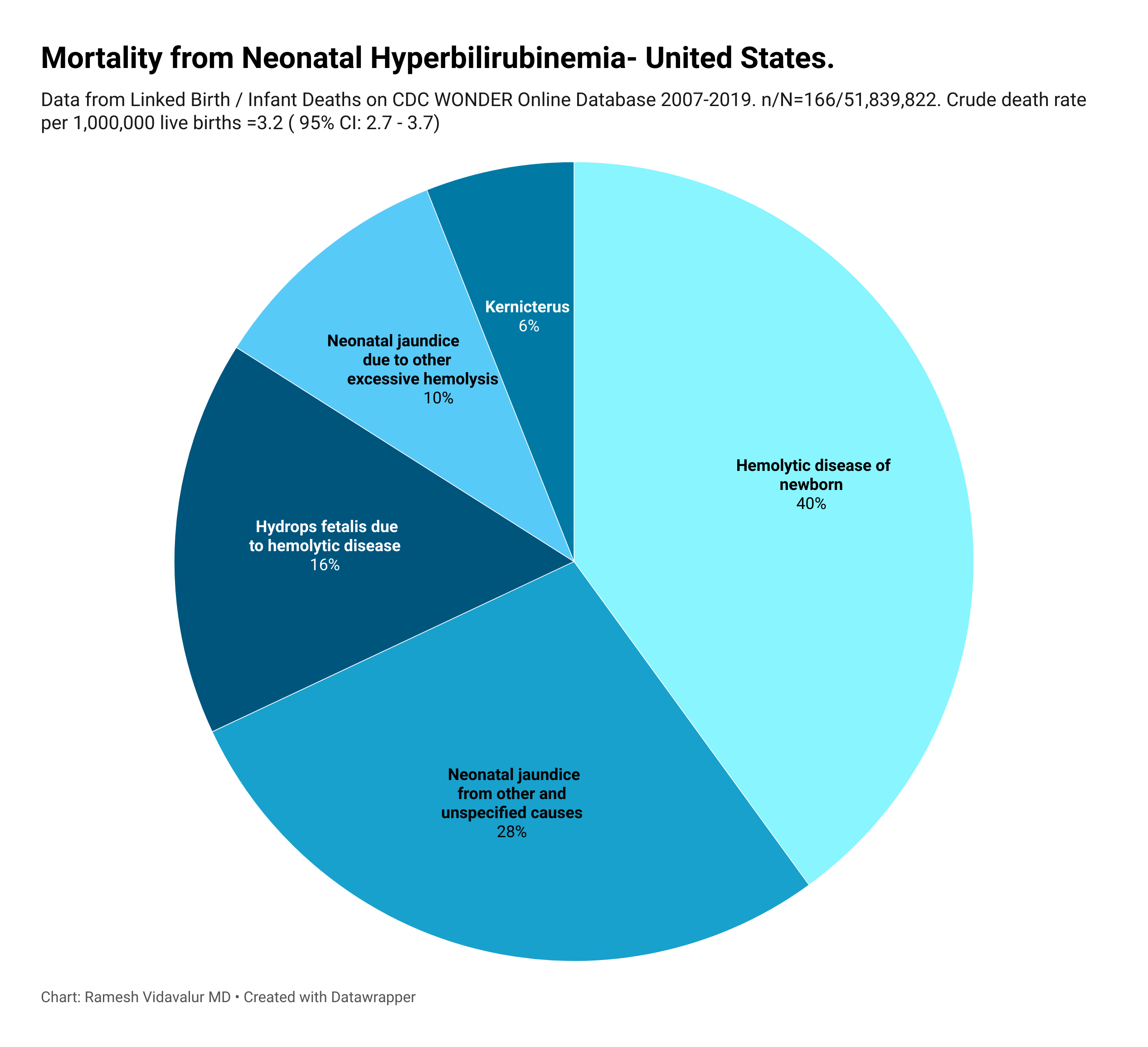Neonatal Hematology & Bilirubin Metabolism
Neonatal Hematology & Bilirubin Metabolism 1: Bilirubin
110 - Neonatal and Infant Mortality Due to Extreme Hyperbilirubinemia in United States, 1990–2019.
Saturday, April 29, 2023
3:30 PM - 6:00 PM ET
Poster Number: 110
Publication Number: 110.238
Publication Number: 110.238
Ramesh Vidavalur, Weill Cornell Medicine, Ithaca, NY, United States; Vinod K.. Bhutani, Sanford Children's Hospital - Fargo, STANFORD, CA, United States

Ramesh Vidavalur, MD MBA
Attending Neonatologist
Weill Cornell Medicine/Cayuga Medical Center
Ithaca, New York, United States
Presenting Author(s)
Background: Increased access to phototherapy and the serial guidelines from the American Academy of Pediatrics to manage newborn jaundice (1994, 2004) are likely to have influenced the public health outcomes of extreme hyperbilirubinemia (EHB, serum bilirubin >25mg/dL). Of these, mortality attributed to EHB, unusual but rare, remains a major clinical concern. Quality of neonatal services now relies on the timeliness, and effectiveness of both preventive and therapeutic interventions.
Objective: To ascertain the continued trends in EHB related neonatal and infant mortality (EHB-IMR) in United States from 1990 to 2019.
Design/Methods: Firstly, we accessed death data from Global Health Data Exchange tool (https://ghdx.healthdata.org/) for annual counts by age (early: 0-6 days, late: 7-27d, post neonatal: >28d-365d) and reported by mean estimates with 95% uncertainty intervals (UI). Secondly, we extracted data from National Vital Statistics System, USA annual birth cohorts from 1990-2019 and lastly, CDC WONDER births/deaths linked system from 1999-2019 was crosschecked to correlate infant deaths which were attributed to hyperbilirubinemia (ICD 10 codes P55-59). We calculated annual trends in EHB-IMR and determined mean annual percent changes (APC) using Joinpoint regression software version 4.9.1.0 (National Cancer Institute, USA) with statistical significance set at p< .05.
Results: In United States, annual infant death counts attributional to EHB decreased by 75% from 44 (95% UI: 41-48) in 1990 to 11 (95% UI: 10-12) in 2019. Concurrently, EHB-IMR reduced from 10.8 (95% UI: 9.9, 11.8) in 1990, to 3 (95% UI: 2.6, 3.4) per million live births in 2019. Overall, average APC rates for early, late and post neonatal EHB-IMR were -4.2 (95% CI: -4.5, -4.0; p< 0.001), -3.5 (95% CI: -3.8, -3.2; p< 0.001), and -6.6 (95% CI: -7.8, -5.3; p< 0.001) [Figure 1]. We also observed a significant rapid decline in crude mortality rate between years 1990 to 2001 (APC: -7.9 [95% CI: -8.4, -7.5]; p< .001). From CDC-WONDER database, we estimate EHB related mortality incidence at 1 in 284,095 (95%: 322,563, 251,285) live births [Figure. 2]. The causes of these mortalities were primary related hemolytic disease as compared to other causes [Figure 3].
Conclusion(s): These population databases provide laudatory evidence of consistent decline in hyperbilirubinemia related mortality among infants in United States with about 3 kernicteric deaths per million livebirths. The shift of mortality to later neonatal age and preponderance of hemolytic disorders related deaths raise concerns for better screening and testing of inherited hemolytic conditions.
.png)
.png)

